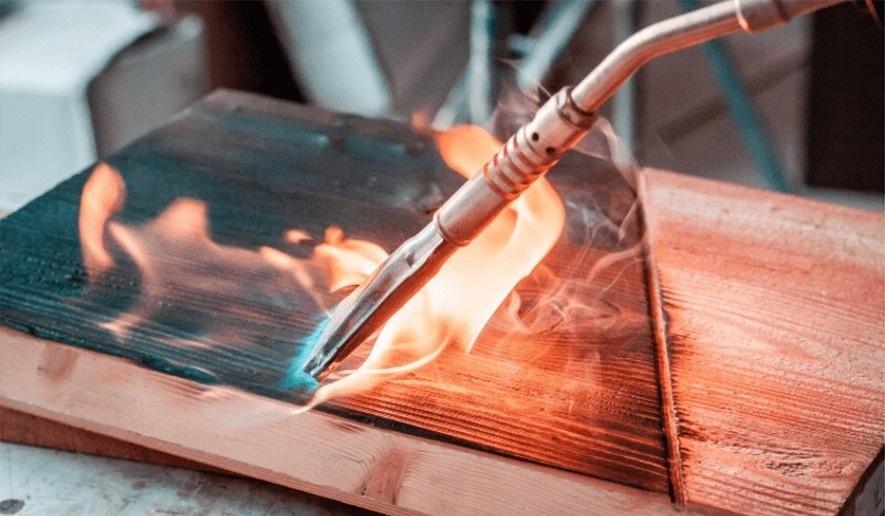Plywood is widely used in construction, but with different types of plywood available in the market, it can be confusing to choose one that meets your needs.
Don’t worry.
To make it easy for you, we have compiled a list of different types of plywood in India down below.
Dive now to learn more about them so that choosing one will be easier for you.
Here are the different types of plywood
1. Zero Emission Plywood
Zero Emission plywood is an engineered plywood with wood particles and fibres combined with a low-formaldehyde adhesive. This means it doesn’t create toxic emissions, unlike other types of plywood.
Also, it comes with E-O emission certification.
Benefits of Zero-Emission Plywood
- It adheres to both formaldehyde emission and zero-emission standards
- Possesses an antibacterial coating that offers a 2-in-1 solution, ensuring the safety and well-being of households
- Fits the environmental rules and regulations
- No formaldehyde emissions
- High durability
- It is also water-resistant, and fire-resistant
2. CARB-certified Plywood
CARB-certified plywood is another type of zero-emission plywood. The only difference is that the certification is from California Air Resources Board (CARB) – A USA-based government organization that strives to protect the environment.
This is one of the eco-friendly types of plywood out there.
Benefits of CARB-Certified Plywood
- Low pollution
- Improved indoor air quality
- Compliance with environmental regulations
- High versatility
3. Fire-retardant Plywood
Fire retardant plywood is a type of plywood that has been treated with special fire-resistant chemicals to reduce its flammability and slow down the spread of fire.
This treatment makes the plywood more resistant to ignition, combustion, and the spread of flames.
Hence, it’s an ideal option for buildings and other structures that are prone to fire breakouts.
Benefits of Fire Retardant Plywood
- Helps to stop the spread of fire and reduce the damage.
- Lasts long, all thanks to its chemicals
- Reduces the amount of smoke and toxic fumes emitted into the air.
- Requires less maintenance
- It’s water-resistant and borer & termite resistant
- Has high versatility
4. Marine Plywood or BWP Plywood – One of the Strongest Types of Plywood
Marine Plywood, also known as Boiling Waterproof (BWP) plywood, is one of the types of plywood that is ideal for places that are prone to water exposure such as kitchens, boats, docks, etc.
It is made with waterproof adhesive and high-quality, durable wood veneers that are selected for their resistance to rot, moulds, and mildew.
Benefits of Marine Plywood
- It can sustain 500+ hours in boiling water
- It resists warping under the presence of water
- It is a relatively strong plywood
- It’s smooth and resists borers as it’s treated with a unique combination of various toxicants.
- It is highly durable.
Need high-quality plywood? Get it from Afyun
Get in touch with us to get the best recommendations for your requirements.
- Money-back guarantee
- Borer-proof
- 100% selected timber
- Chemically treated
5. Boiling Water Resistant Plywood (BWR)
As the name suggests, BWR Plywood is a water-resistant plywood.
It’s made with high-quality hardwood veneers that are bonded together with a waterproof synthetic resin adhesive.
BWR plywood is ideal for places that witness short-term water exposure. This is similar to BWP plywood but the water-resistance capacity is low comparatively. So is the strength. Also, ISO certification differs.
Benefits of Boiling Water Resistant (BWR) Plywood
- It can last long due to its high-quality veneer.
- It’s strong and stable
- It can be used for furniture, cabinets, and panelling
- It’s easy to cut, and drill
6. Moisture-resistant Plywood
If you want to keep moisture at bay, this one is for you.
Moisture-resistant Plywood (MR Grade Plywood) is one of the best types of plywood in India that’s famous for its moisture resistance in both damp and humid conditions.
This is ideal for indoor applications like cabinets and furniture where there is no water exposure.
Benefits of Moisture-resistant Plywood
- It performs well in both dry & wet conditions
- It’s strong and durable
- It gives no chance for warping
7. Flexyply
From its name you would have guessed what Flexyply is.
Yes, this is extremely flexible, unlike other types of plywood. If your furniture or any structure requires curves and bends, this is the best type of plywood.
It’s made from layers of thin plies, which helps with flexibility.
Flexyply is ideal for creating tasteful residences, novelties, exhibition designs and office interiors.
It can be used for other common structures and furniture like TV stands, chairs, columns, arches, hotel fittings, kitchen fittings and false ceilings.
Benefits of Flexyply
- It’s highly flexible as the name implies
- It has high durability
- It has water-resistant features
- Its sound absorption is awesome
- It’s comparatively lightweight
- Its smooth surface and unique bending capabilities add a visually striking element to any project
8. Film Face Plywood
Film face plywood, also known as shuttering plywood, is a type of plywood that is specially designed for use in construction projects as a formwork material.
Its surface is smooth and waterproof, all thanks to the phenolic film on both sides.
This type of plywood is commonly used in concrete frameworks, but people also use it for other applications such as flooring, wall panelling and furniture.
Benefits of Film Face Plywood
- It has water-resistance capabilities
- Its strength and stability are commendable
- It’s moisture-resistant
- It resists corrosive chemicals
- Its film coating gives it durability
- It can be used for various applications
Types of Plywood Grades
There are 4 types of plywood grades: A, B, C, and D, where A is the highest grade, and D is the lowest.
Grade A
This type of plywood grade has a smooth, sanded surface and is free of knots or other defects. It is typically used for high-end furniture, cabinetry, and decorative projects.
Grade B
This is one of those types of plywood that has a slightly rougher surface than grade A and may have some visible defects such as knots. But it’s still considered high-quality plywood and is suitable for use in furniture and cabinetry.
Grade C
This grade of plywood has a rougher surface than grade B and may have visible knots and other defects. It is commonly used for construction and industrial applications.
Grade D
This plywood has the lowest quality and may have numerous visible defects, including knots, cracks, and splits. It is typically used for rough construction projects where appearance is not a concern.
Conclusion
In a nutshell, these are the vital types of plywood you must know. Next time if you are confused about which plywood to choose, this guide will surely help you.
All these plywoods are available at Afyun Plywood. At Afyun, you can find high-quality plywoods that have undergone cutting-edge manufacturing processes. What’s more, you can witness different types of plywood in India at Afyun, all at competitive prices.
FAQs
What types of plywood are strongest?
All types of plywood vary in their strength. The strongest is Marine Plywood since it comes with premium resin and timber.
Which types of plywood are best for furniture?
We recommend A and B types of plywood grades for indoor furniture since they are smooth and elegant comparatively.
What type of plywood is the cheapest?
Out of all types of plywood, Grade D is the cheapest since it has low quality.
Which type of plywood is best?
All types of plywood that come with ISO certifications are the best to use. For instance, all of our products come with high-authority certifications.
Which are the types of plywood that are waterproof?
Marine and Film Face Plywood are the types of plywood that are waterproof. Whereas BWR plywood is water-resistant. Afyun’s Marine Plywood can sustain even 500+ hours in boiling water.
Pages you might like: fire retardant plywood | marine plywood | waterproof plywood | gurjan plywood | Block Board | Flushdoor





